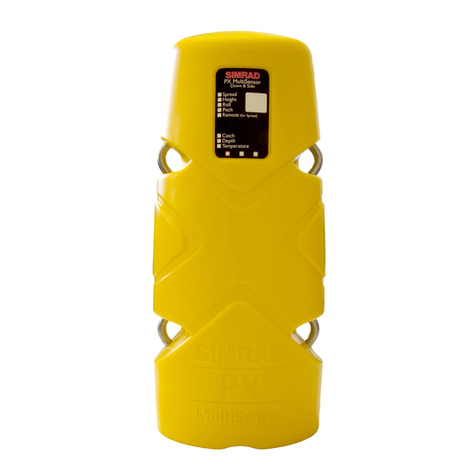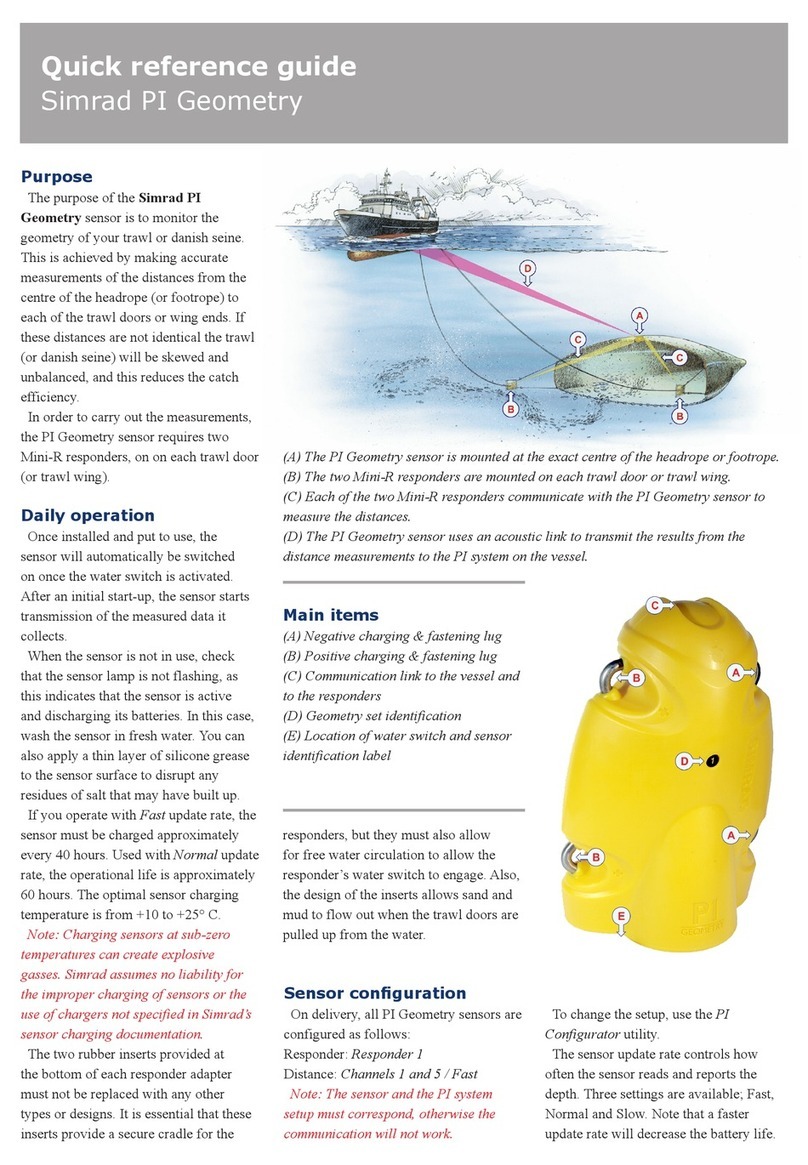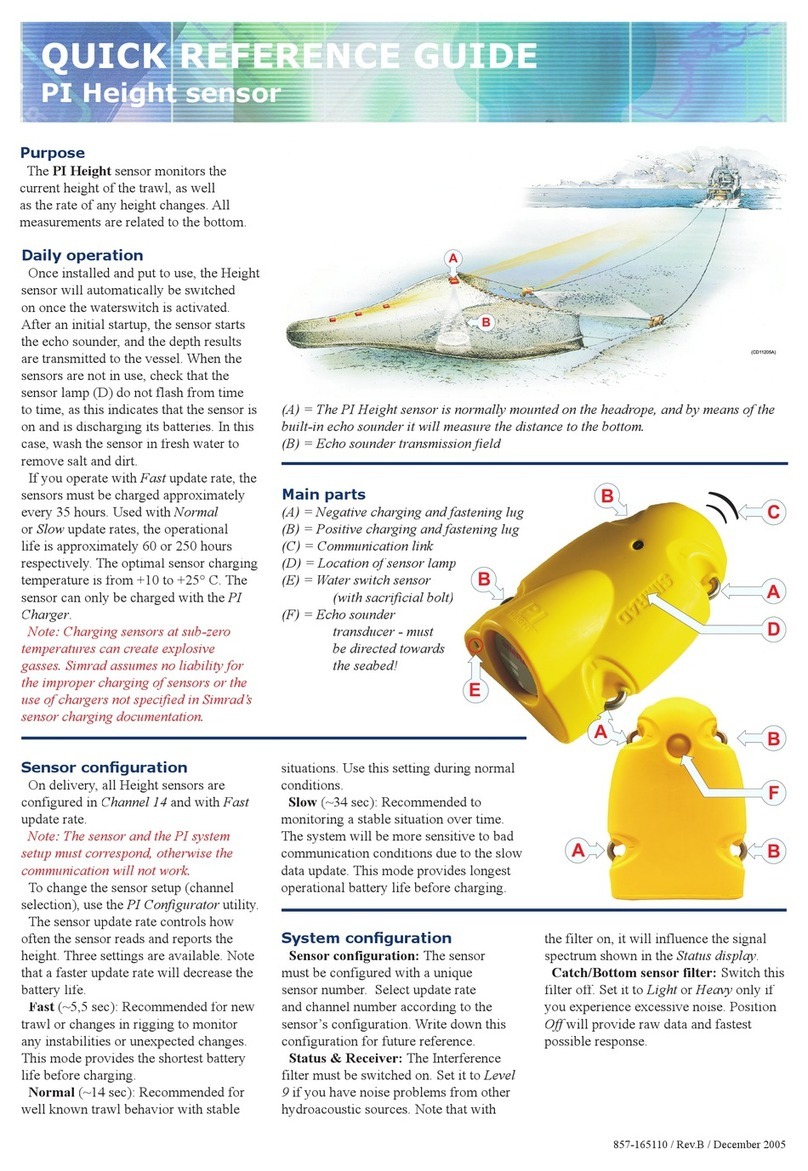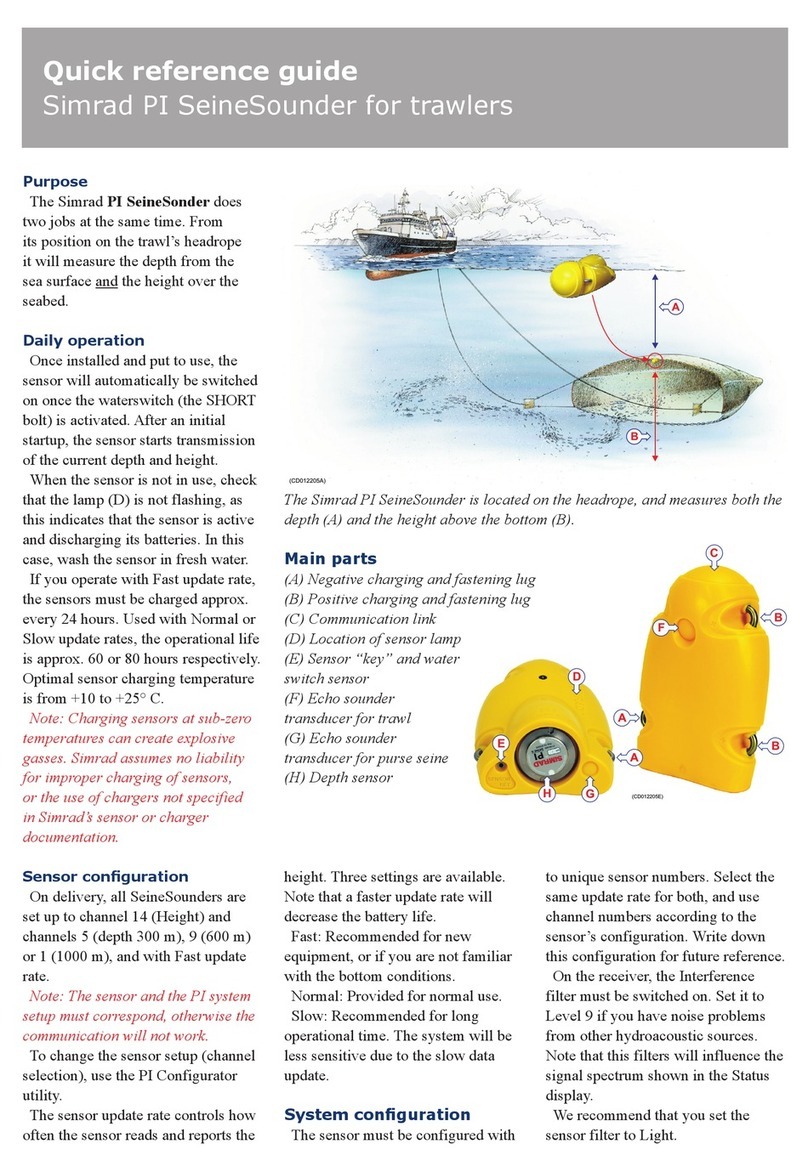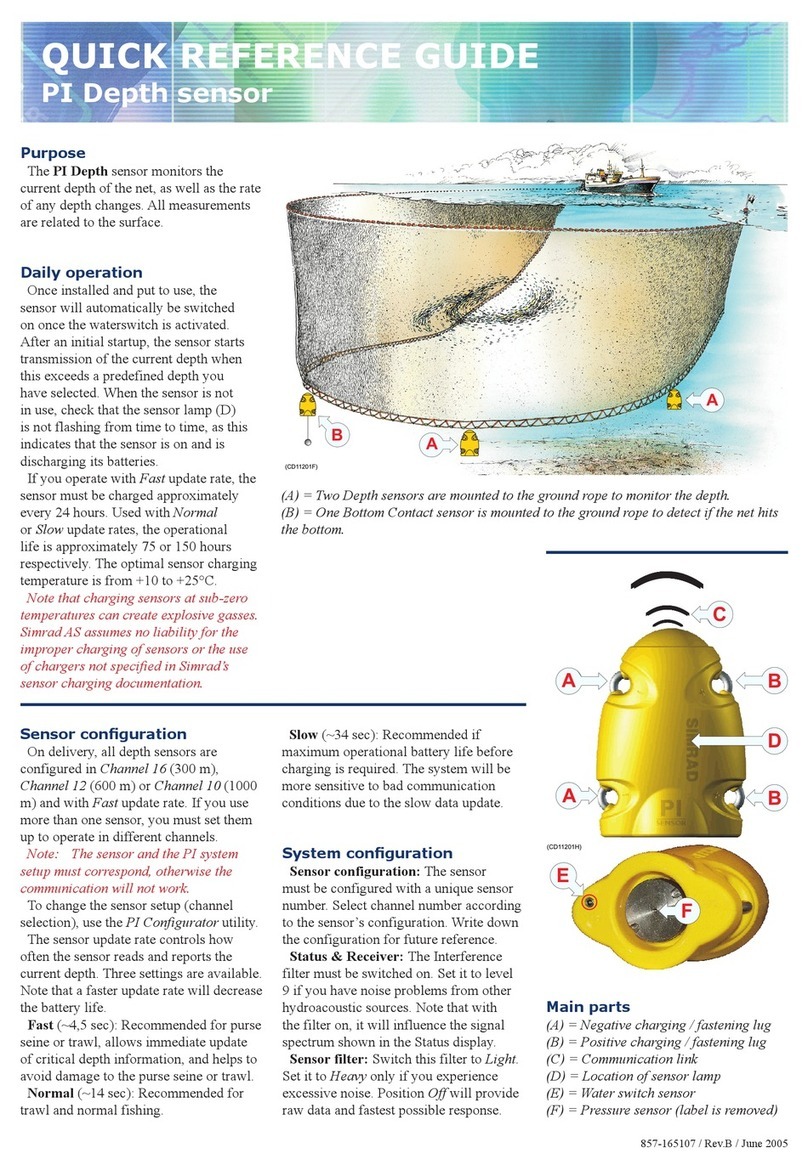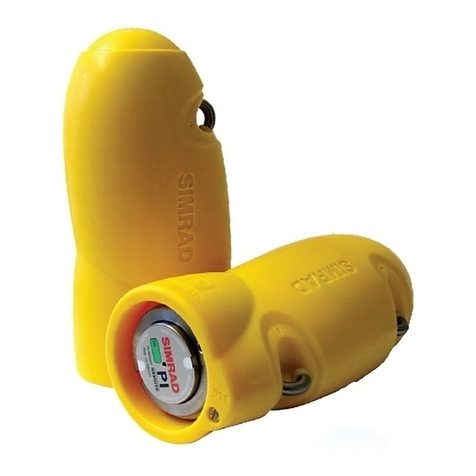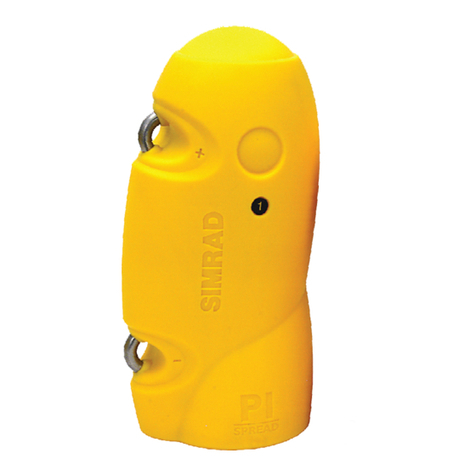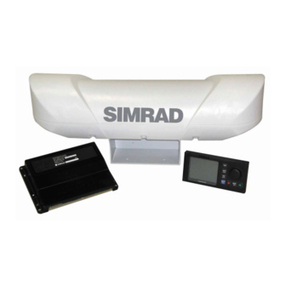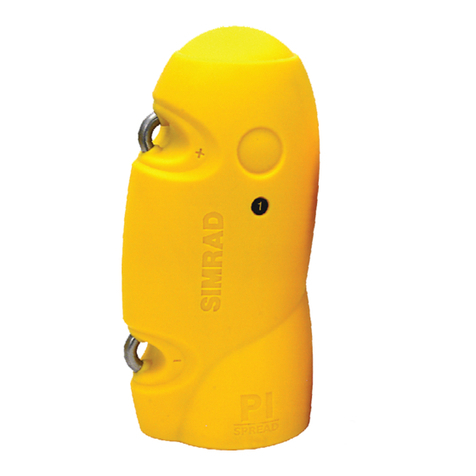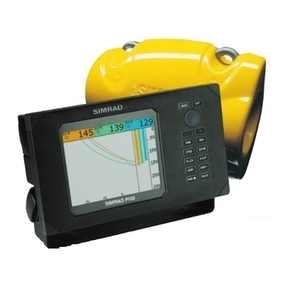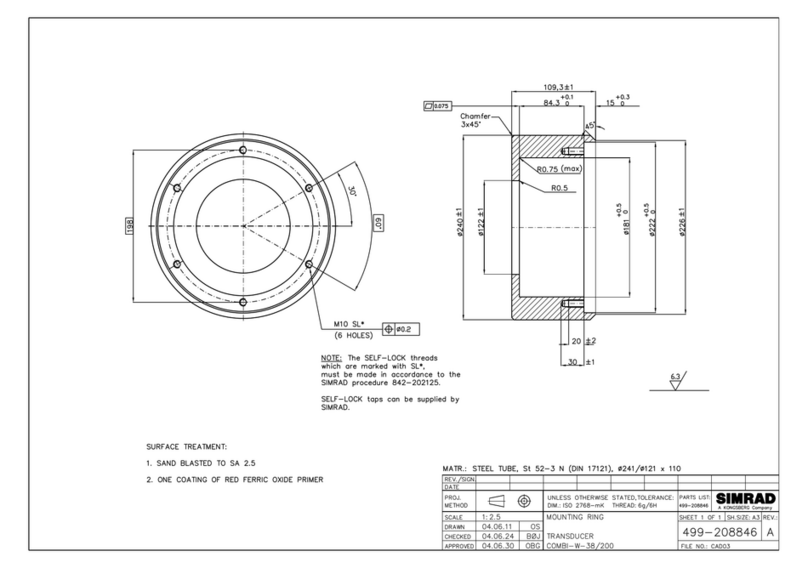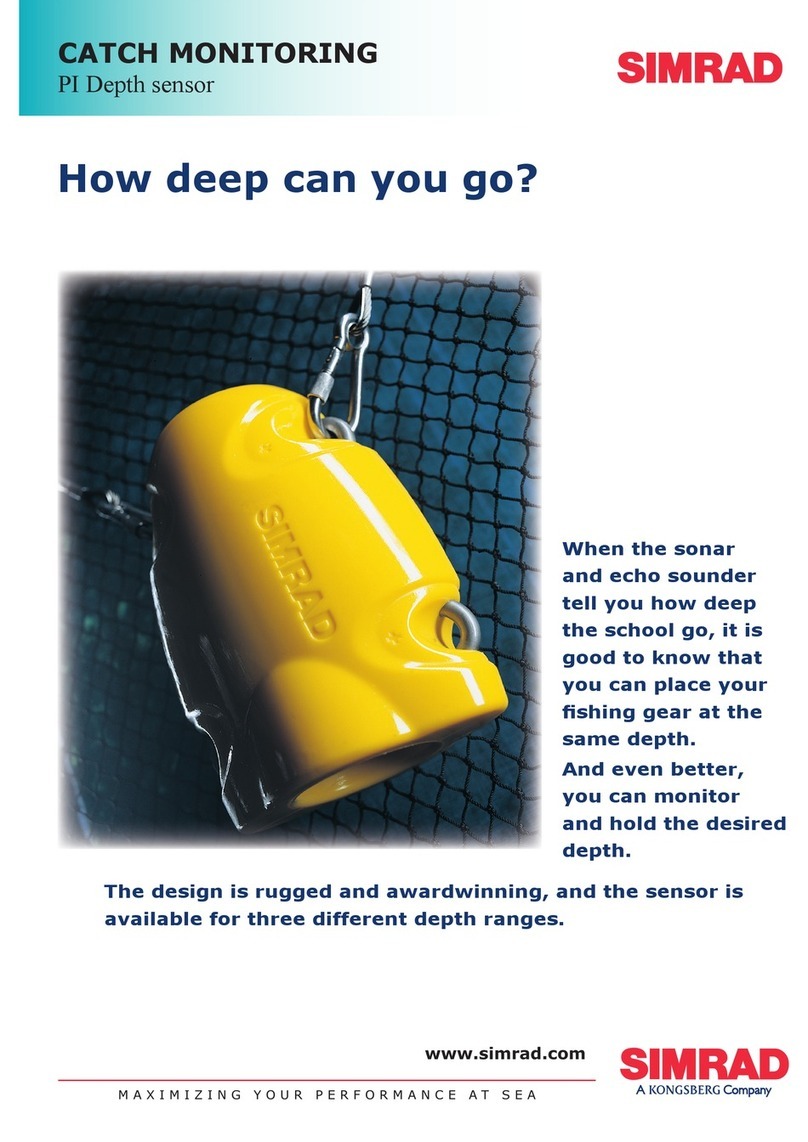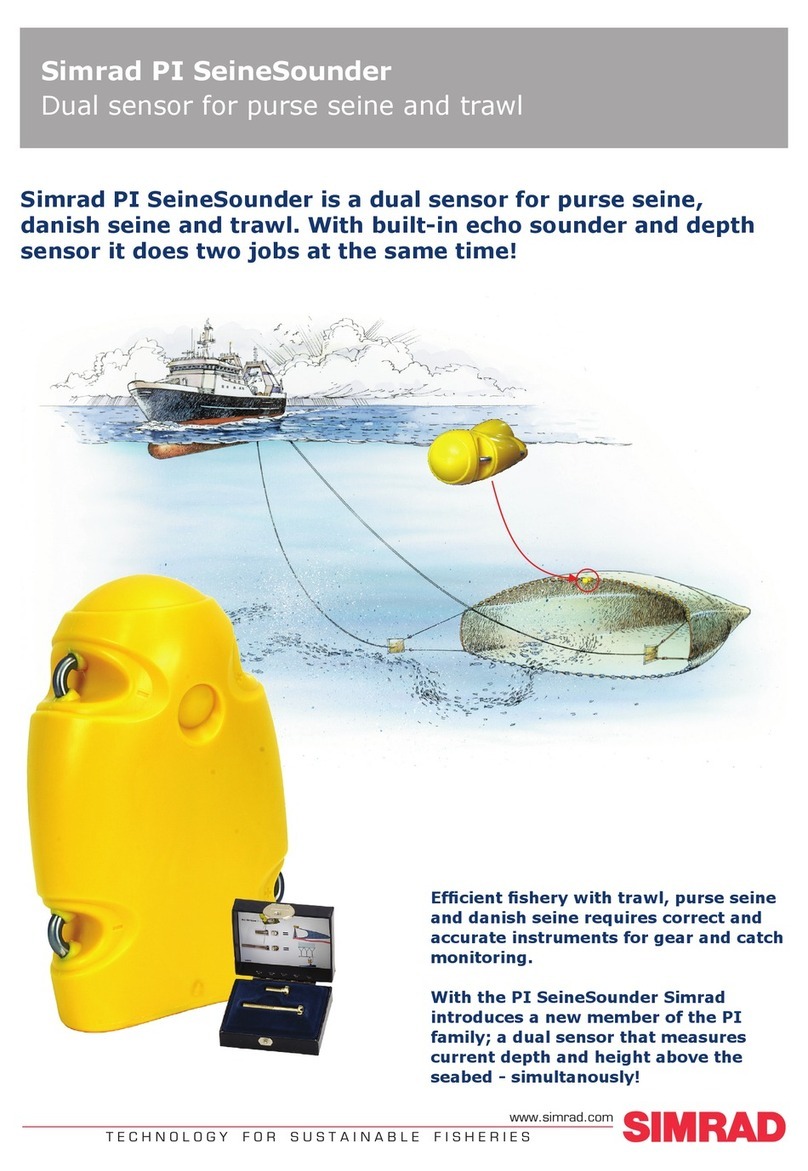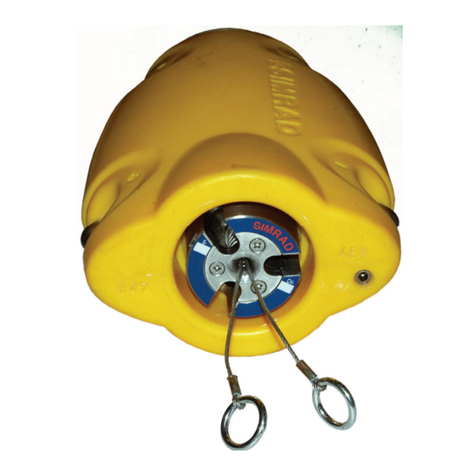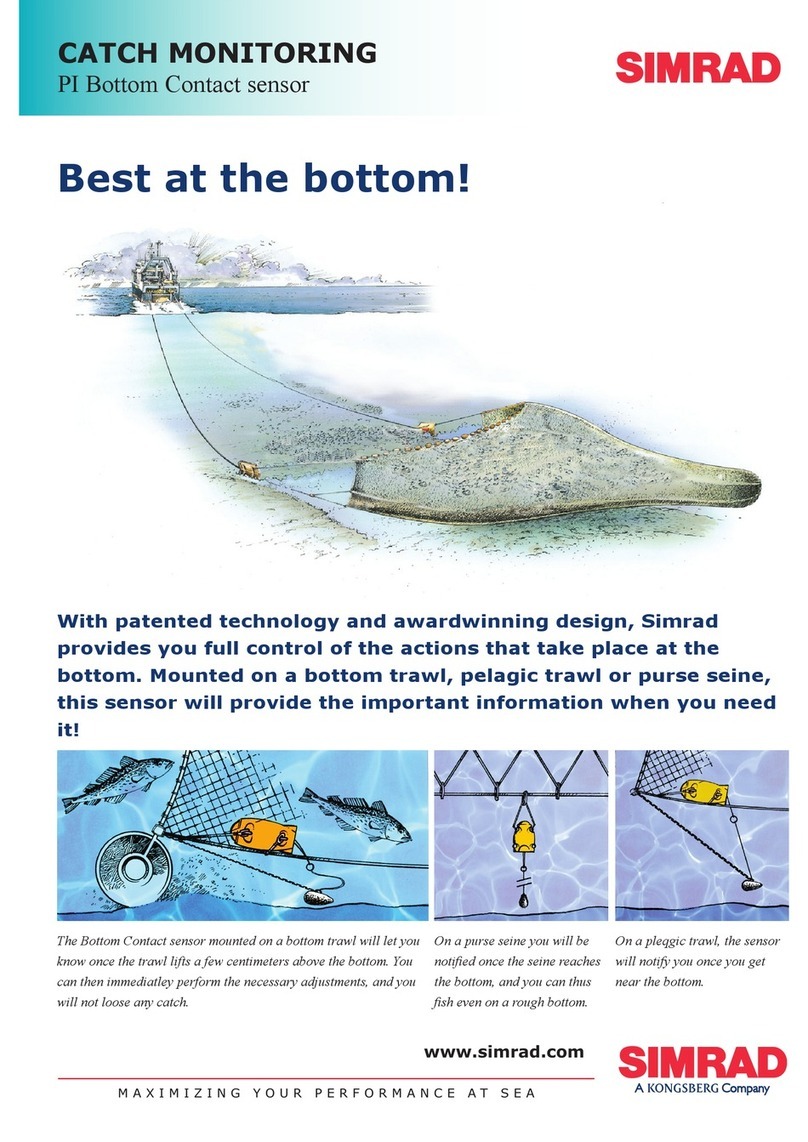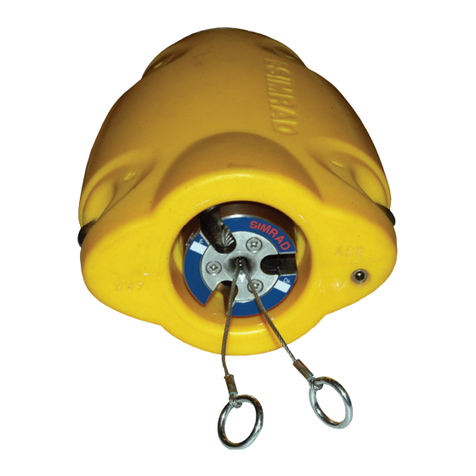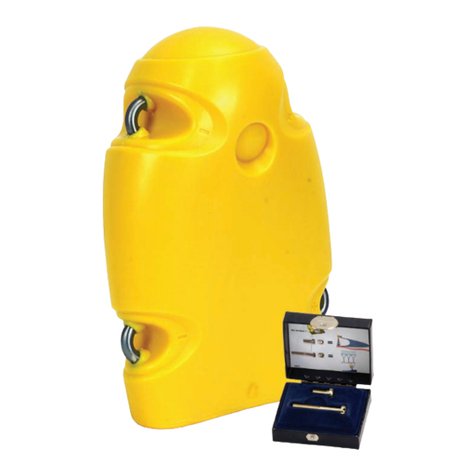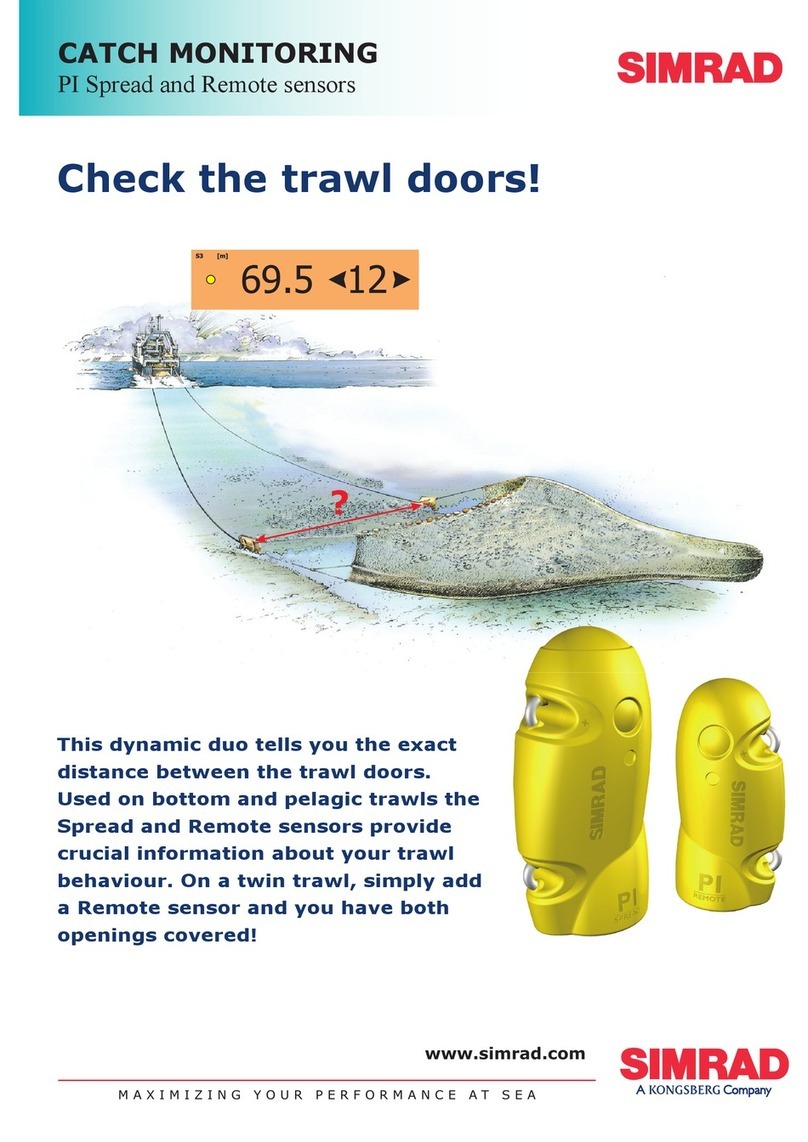Quick reference guide
PI Twin Spread sensor
Purpose
The PI Twin Spread is used with two
Remote sensors to measure the physical
distance between the trawl doors during
twin trawl operations.
(A) = The PI Twin Spread sensor
communicates with the PI system
on the vessel.
(B) = The PI Twin Spread sensor
is mounted on the port trawl
door.
(C) = One PI Remote sensor is
mounted on the center clump.
(D) = One PI Remote sensor is
mounted on the starboard trawl
door.
Daily operation
Once installed and put to use, the
Twin Spread sensor will automatically
be switched on once the waterswitch is
activated. After an initial startup, the sensor
starts interrogating the Remote sensors
to measure the two distances. The results
are transmitted to the vessel. When the
sensors are not in use, check that the sensor
lamps (D) do not flash from time to time,
as this indicates that the sensor is on and is
discharging its batteries. In this case, wash
the sensor in fresh water to remove salt and
dirt.
If you operate with Fast update rate, the
sensors must be charged approximately
every 24 hours. Used with Normal or
Slow update rates, the operational life is
approximately 48 or 70 hours respectively.
For the Remote sensors, the batteries will
last approximately 50, 100 and 150 hours
respectively. The optimal sensor charging
temperature is from +10 to +25° C.
Note that the two rubber inserts provided
Main parts
(A) = Negative charging and fastening lug
(B) = Positive charging and fastening lug
(C) = Communication link to the vessel
(D) = Location of sensor lamp (rear side of
PI Spread)
(E) = Water switch sensor
(F) = Transverse communication links to
the two Remote sensors
at the bottom of each sensor adapter must
not be replaced with any other types or
designs. It is essential that these inserts
provide a secure cradle for the sensors,
but they must also allow for free water
circulation to allow the sensor’s water
switch to engage. Also, the design of the
inserts allows sand and mud to flow out
when the trawl doors are pulled up from
the water.
Note: Charging sensors at sub-zero
temperatures can create explosive gasses.
Simrad AS assumes no liability for the
improper charging of sensors or the use of
chargers not specified in Simrad’s sensor
charging documentation.
Sensor configuration
You can operate two sets of Twin Spread
sensors, these sets are identified as Twin
Spread 1 and Twin Spread 2.
• Twin Spread 1 uses two Remote
sensors: Remote 1 and Remote 3.
• Twin Spread 2 uses two Remote
sensors: Remote 2 and Remote 4.
On delivery, all Twin Spread sensors are
configured as Twin Spread 1 in Channels
2 and 7, with Fast update rate, and for
use with Remote sensors 1 and 3. The
four Remote sensors can be ordered pre-
programmed from Simrad, but if you wish
to use a Twin Spread 2 set-up you must re-
configure a Twin Spread 1 sensor using the
PI Configurator utility.
Note: The Twin Spread sensor and the
PI system setup must also correspond,
otherwise the communication will not work.
The sensor update rate controls how often
the sensor reads and reports the door spread.
Three settings are available. Note that a
faster update rate will decrease the battery
life.
Fast (~5,5 sec): Recommended for new
trawl or gear or changes in rigging to
monitor any instabilities or unexpected
changes. This mode provides the shortest
battery life before charging.
Normal (~14 sec): Recommended for
well known trawl, gear and door behavior
with stable situations. Use
this setting during normal
conditions.
